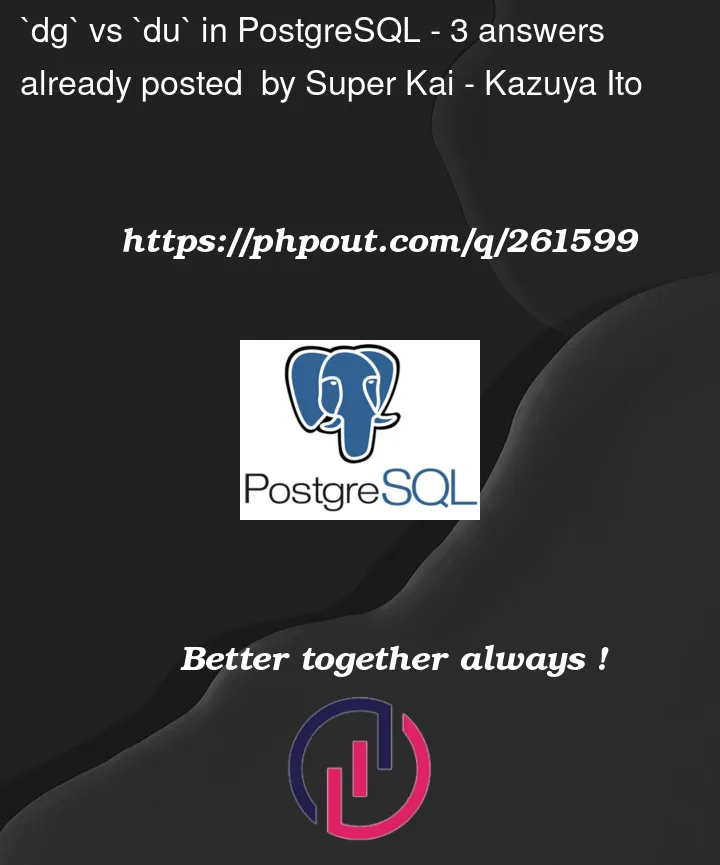I showed users(roles) with dg and du, then there were the same results as shown below:
postgres=# dg
List of roles
Role name | Attributes
-----------+------------------------------------------------------------
anna |
john |
postgres | Superuser, Create role, Create DB, Replication, Bypass RLS
postgres=# du
List of roles
Role name | Attributes
-----------+------------------------------------------------------------
anna |
john |
postgres | Superuser, Create role, Create DB, Replication, Bypass RLS
I also read the explanations of dg and du which are the same as shown below:
postgres=# ?
...
Informational
...
dg[S+] [PATTERN] list roles
...
du[S+] [PATTERN] list roles
...
My questions:
- What is the difference between
dganddu? - If
dgandduare the same, is one of them deprecated at the moment or in the future?




3
Answers
Using
psql --echo-hidden:You can see
dgandduare exactly the same thing:Neither is deprecated. It’s not guaranteed that they won’t be replaced or deprecated in the future, but it’s generally unlikely.
dglists groups,dulists users, which both becamerolesin version 8.1.The documentation says:
It does not matter which one you use. I cannot see into the future, but I would be surprised if either of these commands ever gets removed. The maintenance costs are low, and backward compatibility is valued in PostgreSQL.
These commands pre-date PostgreSQL/8.1, when users and groups were replaced with a single entity, roles:
(Source)
There’s also a note in documentation for
dgsays: